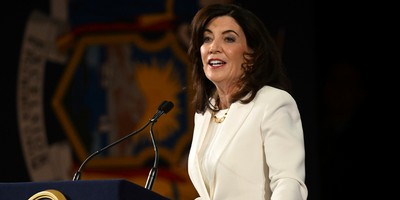On May 8, 1914, President Woodrow Wilson issued Proclamation 1268, “designating the second Sunday in May as Mother's Day” and invited “the people of the United States to display the flag at their homes or other suitable places on the second Sunday in May as a public expression of our love and reverence for the mothers of our country.”
Interestingly, the concept of celebrating Mother’s Day in the United States had been devised just a few years earlier, by Anna Jarvis, who organized the initial Mother's Day service of worship at Andrews Methodist Episcopal Church in Grafton, West Virginia. In fact, to this day, the Andrews Methodist Episcopal Church is recognized as the International Mother’s Day Shrine.
In short, Jarvis sought to establish Mother’s Day to celebrate “the person who has done more for you than anyone in the world.”
However, Jarvis also insisted that “Mother’s” should “be a singular possessive, for each family to honor its own mother, not a plural possessive commemorating all mothers in the world.”
Although this may seem trivial, it represents the important fact that Jarvis imagined Mother’s Day as a holiday in which each and every American family would celebrate the unique qualities of their mother, as opposed to a generic, national celebration of motherhood in the general sense.
It also should be noted that when President Wilson issued his official Mother’s Day Proclamation a few years later, he specifically adopted the punctuation preferred by Jarvis, as opposed to the general term: “Mothers’ Day.”
Unfortunately, about a decade after Mother’s Day was established, Jarvis became disenchanted with the newly crowned holiday, arguing that the day of commemoration and honor had been overtaken by commercial interests.
This is when the term “Hallmark holiday” was first coined, in reference to the upstart Hallmark Cards company, which sought to profit from the novel holiday by selling Mother’s Day cards.
Recommended
Eventually, Jarvis became so disillusioned with the crass consumerism (in her opinion) that had enveloped Mother’s Day that she actually organized boycotts of the holiday she had founded. Moreover, she even threatened legal action against the companies that she believed were unduly profiting on the back of the newly minted Mother’s Day.
According to Jarvis, the essence of Mother’s Day was sentiment, not profit. In fact, in the years that followed, Jarvis even went so far as to protest against candy manufacturers and flower companies for selling goods designed to celebrate Mother’s Day. In 1925, she was arrested for disorderly conduct after protesting against the selling of carnations, which had come to represent the holiday in the minds of many Americans.
Jarvis called for Americans to celebrate Mother’s Day by writing heartfelt letters to their mothers, showing their love and thankfulness. She adamantly opposed gift-giving and pre-made cards.
On one hand, I understand where Jarvis is coming from. It is somewhat sad that a holiday that was created to celebrate the special bond between a mother and child so quickly gave way to commercialization.
However, on the other hand, I also think Jarvis is wrong to cast such stern judgment concerning how her countrymen chose to celebrate the new holiday.
Hallmark Cards, “Big Candy,” and “Big Flower” did not put a gun to the heads of Americans, threatening them with death unless they caved to their base ways and bought gifts for their mothers.
Actually, people overwhelmingly chose to purchase these products as a way of showing their sincere and deep-felt gratitude towards their mothers. Moreover, the celebration of Mother’s Day (or any other holiday for that matter) is not a binary choice of staying true to the original sentiment or “selling-out” by adding gifts into the equation.
There is a middle-ground, as I bet most Americans (then and now) adhere to. For example, this Mother’s Day, I will give my mother a gift and a card, however, I will be sure to write how much I love and appreciate her in the blank space of the card specifically designed for this very purpose.
However, like Jarvis, I will draw a line in the sand: Under no circumstances, even if I could not articulate the words or could not actually put pen to paper, would I even fathom of using AI, such as ChatGPT, to produce my message to my mom on Mother’s Day.
As they say, it’s the (human-generated) thought that counts.
So, in the spirt of Anna Jarvis, Happy Mother’s Day—mom!
Chris Talgo (ctalgo@heartland.org) is editorial director at The Heartland Institute.
























Join the conversation as a VIP Member